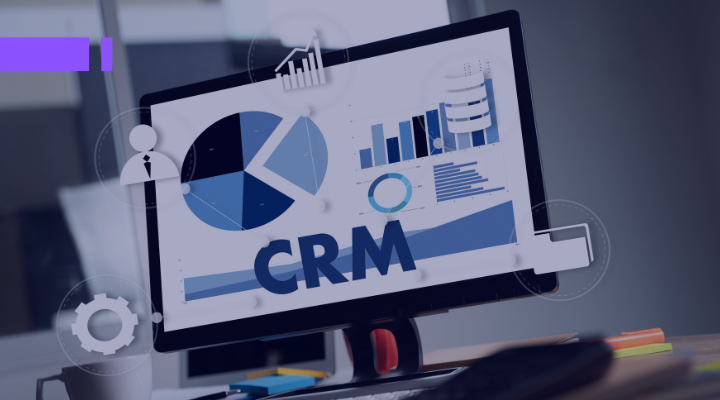A market competitive analysis, also known as competitor analysis, delves into the strategies, strengths, and weaknesses of your direct and indirect competitors.
Conducting a result-oriented market competition analysis equips you to gather valuable market intelligence to inform your own market positioning strategy and gain a competitive advantage.
This blog post shows you how to conduct competitive analysis that helps you understand the market and yields actionable insights that can propel your business towards success.
Table of Contents
| Why is a Result-Oriented Market Competitive Analysis Important |
| The 10-Step Guide: How to Conduct Market Competitive Analysis |
| 1. Define Your Competitive Landscape |
| 2. Gather Invaluable Market Intelligence |
| 3. Unveiling Competitive Strengths and Weaknesses |
| 4. Benchmarking Your Performance |
| 5. Understanding Customer Perception |
| 6. Analyzing Market Trends and Future Landscape |
| 7. Actionable Insights: The Heart of a Result-Oriented Analysis |
| 8. Continuous Monitoring: Maintaining a Competitive Edge |
| 9. Leveraging Competitive Intelligence Tools: Streamlining the Research Process |
| 10. Building a Collaborative Culture: Fostering Knowledge Sharing |
| Looking Ahead: Embracing Automation and Advanced Analytics |
Why is a Result-Oriented Market Competitive Analysis Important
In the cutthroat world of business, staying ahead of the curve requires a deep understanding of your competitors. A result-oriented market competitive market analysis goes beyond simply identifying your rivals; it’s a strategic study designed to yield actionable insights that propel your business forward.
Imagine a company launching a new fitness tracker. A traditional competitor analysis might involve identifying established brands and their product features. However, a result-oriented market competitive analysis would delve deeper. It would analyze customer reviews of competitor products, uncovering pain points like short battery life or limited fitness tracking capabilities.
Gathering this comprehensive data, the company can make informed decisions about their own fitness tracker. The result-focus would transform the market competition analysis from a passive exercise into a strategic tool for crafting a winning business strategy.
The 10-Step Guide: How to Conduct Market Competitive Analysis

Need some actionable guidelines on how to conduct competitive analysis. Here are ten tips you may find useful.
1. Define Your Competitive Landscape
The initial step in any market competitive analysis involves identifying your key competitors. Go beyond just direct competitors; consider indirect competitors who might vie for the same customer segment.
Conduct thorough market research to create a comprehensive list, utilizing tools like industry reports, business directories, and social listening platforms.
2. Gather Invaluable Market Intelligence
Once you’ve identified your competitors, delve deeper to understand their offerings. Analyze their websites, social media presence, marketing materials, and customer reviews.
Pay close attention to their messaging, target audience, and value propositions. Consider subscribing to competitor newsletters or attending industry events to glean further insights.
3. Unveiling Competitive Strengths and Weaknesses
Result-oriented market competitive analysis isn’t just about understanding what your competitors do well; it’s also about identifying their vulnerabilities. Analyze their product offerings, pricing strategies, customer service channels, and brand reputation.
Look for areas where they might be falling short and identify opportunities for your business to capitalize.

4. Benchmarking Your Performance
Market competition analysis goes beyond simply gathering competitor data. Benchmark your own performance metrics against your identified competitors. This might involve analyzing market share, customer acquisition costs, brand awareness, or social media engagement.
Identifying areas where you lag allows you to develop strategies to close the gap and establish a competitive edge.
5. Understanding Customer Perception
A result-oriented market competitive analysis transcends simply analyzing competitor offerings; it delves into the heart of the market – customer perception. Understanding how customers view your competitors and their products or services is crucial for crafting a winning strategy.
There are several ways to gain valuable customer insights. Market research tools like surveys and focus groups empower you to gather direct feedback from your target audience. Analyzing online reviews and social media conversations surrounding your competitors can further illuminate customer pain points and unmet needs.
6. Analyzing Market Trends and Future Landscape
The best market competition analysis adopts a forward-looking perspective. It’s not just about understanding the current competitive landscape; it’s about anticipating potential disruptions and emerging market trends.
Analyzing industry publications, attending industry conferences, and monitoring competitor innovation efforts can identify potential shifts on the horizon. This proactive approach allows you to adapt your strategies before these disruptions take hold.

7. Actionable Insights: The Heart of a Result-Oriented Analysis
A successful market competitive analysis doesn’t simply gather data; it translates that data into actionable insights. Once you’ve analyzed your competitor landscape, identify key takeaways and translate them into concrete strategies for your business.
This might involve refining your market positioning strategy, developing new product features, or adjusting your marketing messaging to resonate better with your target audience.
8. Continuous Monitoring: Maintaining a Competitive Edge
The competitive landscape is dynamic, and so should your competitor analysis. Don’t view this as a one-time exercise. Continuously monitor your competitors’ activities, market trends, and customer sentiment.
Regularly revisit your findings and adapt your strategies to stay ahead of the curve and maintain a competitive edge in the ever-evolving market.
9. Leveraging Competitive Intelligence Tools: Streamlining the Research Process
Nowadays there are numerous competitive intelligence tools you can leverage to streamline your analysis. These tools offer features like automated competitor website monitoring, social media listening, and customer review analysis.
Utilizing such tools can help gather vast amounts of competitor data efficiently, saving valuable time and resources. Additionally, some tools provide advanced analytics features that can help you identify trends and patterns within the competitor data, providing deeper insights that might be missed through manual analysis.
10. Building a Collaborative Culture: Fostering Knowledge Sharing
A result-oriented market competitive analysis isn’t conducted in isolation. Encourage a collaborative culture within your organization to maximize the benefits of your research. Share your findings with relevant departments like marketing, sales, and product development.
This cross-functional knowledge sharing fosters a deeper understanding of the competitive landscape and allows different teams to leverage the insights to improve their strategies. Additionally, consider incorporating competitor analysis into your company culture by establishing processes for continuous competitor monitoring and sharing updates with key stakeholders.
Looking Ahead: Embracing Automation and Advanced Analytics
The future of market competitive analysis lies in automation and advanced analytics. Technological advancements will lead to data gathering and analysis tools that provide even deeper insights into competitor strategies and customer behavior.
When figuring out how to conduct competitive analysis, ensure you include these advancements in your strategy. Including these tools and technologies will enable you to conduct more comprehensive competitor analysis and gain more accurate actionable insights faster.
Follow us for more on LinkedIn





